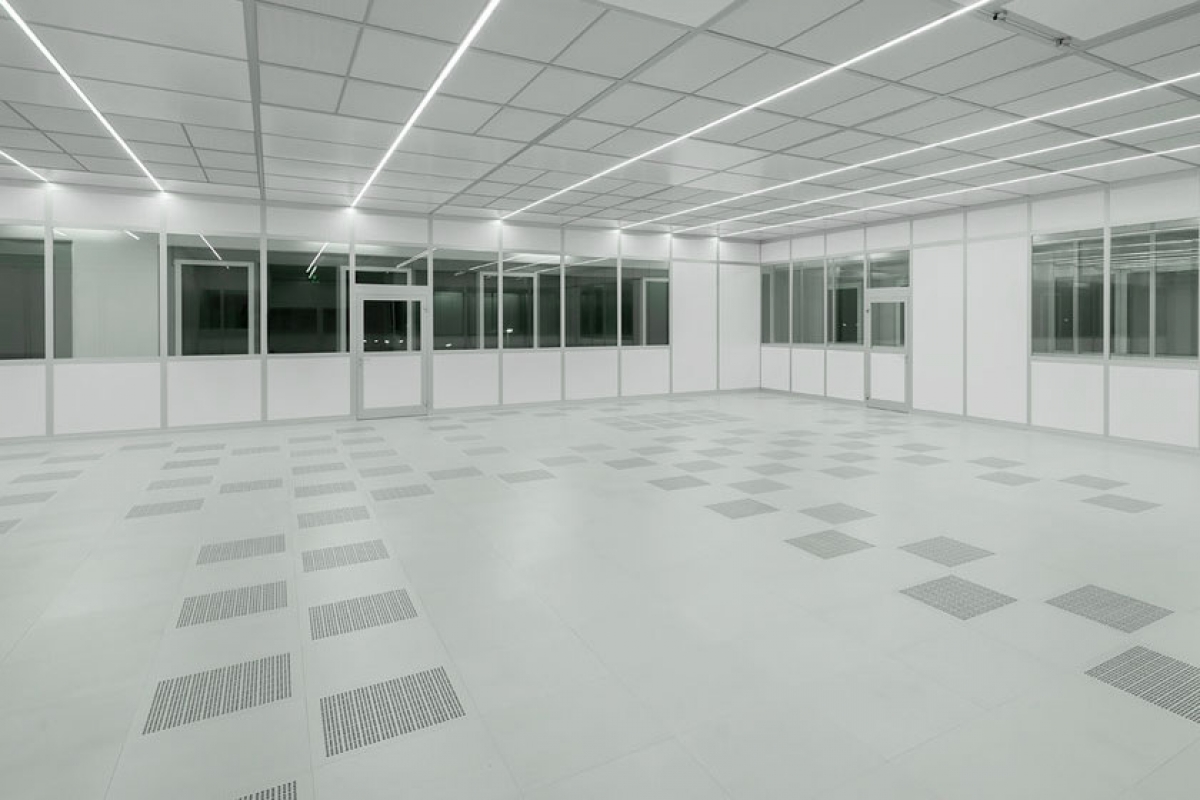
Airflow Systems Create Lighting Challenges
Everything in the cleanroom, including the lighting fixtures, is designed to ensure successful air filtration and maintain the laminar airflow in a contamination-free environment. Depending on the function of the controlled environment, a cleanroom will use either HEPA or ULPA filtration. These air-filtering systems are typically an expensive component and one of the first to be considered in construction. They take up a majority of the ceiling space, which leaves a real challenge for lighting the environment.
Hours of thorough research and design are required to create cleanroom lighting fixtures that maintain the integrity of the space and work effectively with the HVAC system. Regardless of the industry, every cleanroom lighting design should be virtually maintenance-free and provide the right amount of illumination.
Achieving effective light quality
In addition to becoming familiar with the fixture styles for each ISO classification, it is important to know what to consider when selecting the exact fixture. Understanding what lighting features are most important for cleanroom environments will help determine the most efficient solution that requires the least amount of maintenance possible.
Light levels
In most cases, cleanroom facilities produce and/or test small objects. Pharmaceutical and semiconductor industries, for example, typically use cleanrooms to manufacture small pills and computer chips, respectively.
Lighting fixtures must provide a high level of illumination so employees have enough light to carefully handle small components. Illumination levels may vary depending on the different process areas within the cleanroom, so it is important for the specifier to review each process area to determine the illumination level required for each task.
When specifying fixtures, the goal is to select the least number of fixtures that can provide the necessary illumination for a cleanroom. Limiting the number of fixtures helps reduce the amount of maintenance needed. Often, lighting manufacturers can help determine the number of fixtures needed for a given space by reviewing the layout of the cleanroom facility.
Furthermore, surfaces in most cleanrooms tend to be highly reflective. Fixtures need to produce a high intensity of light but should not produce any glare. There are high-efficiency fluorescent luminaires on the market today—ones that produce the amount of light intensity needed with minimal glare.
Housings
Fixture housings must be constructed of materials such as aluminum, carbon steel, or stainless steel. These help eliminate the chance of contamination and stand up to rigorous cleaning procedures. The fixture should be welded or sealed shut to prevent the passage of particles into or out of the housing. This minimizes the chance for dust or particle collection on the fixture.
In some cases, fixtures should be wet-listed to accommodate cleanrooms that need to be periodically hosed down.
Lenses
Lenses should have a smooth outer surface, meaning those with prisms should be inverted so the prisms are on the inside of the fixture. This makes the fixture easy to clean and creates less opportunity for contaminants or dirt to collect. Many lenses and diffusers are available for each ISO classification. Acrylic lenses currently are the most common type because they are the most durable.
For cleanroom environments in the semiconductor industry, lenses can be constructed with radio filters so they do not compromise any electronics in the facility.
Resources & Articles
CLIN ® "Resources" page is for individuals/companies seeking information on cleanrooms and controlled environments. Find Cleanroom News, Discussion Forums, Cleanroom Cleaning Recommendations, Cleanroom Terminology, Cleanroom Directory, and more.
Content Disclaimer
Information are contributed by/from different websites and all credit goes to its respective owners/writers/websites/companies and etc, and while we endeavour to keep the information up to date and correct, we make no representations or warranties of any kind, express or implied, about the completeness, accuracy, reliability, suitability or availability with respect to the website or the information, products, services, or related graphics contained on the website for any purpose. Any reliance you place on such information is therefore strictly at your own risk.
In no event will we be liable for any loss or damage including without limitation, indirect or consequential loss or damage, or any loss or damage whatsoever arising from loss of data or profits arising out of, or in connection with, the use of this website.
Through this website you are able to link to other websites which are not under the control of respective owners/writers/websites/companies and etc. We have no control over the nature, content and availability of those sites. The inclusion of any links does not necessarily imply a recommendation or endorse the views expressed within them.
Every effort is made to keep the website up and running smoothly. However, CLIN ® takes no responsibility for, and will not be liable for, the website being temporarily unavailable due to technical issues beyond our control.











